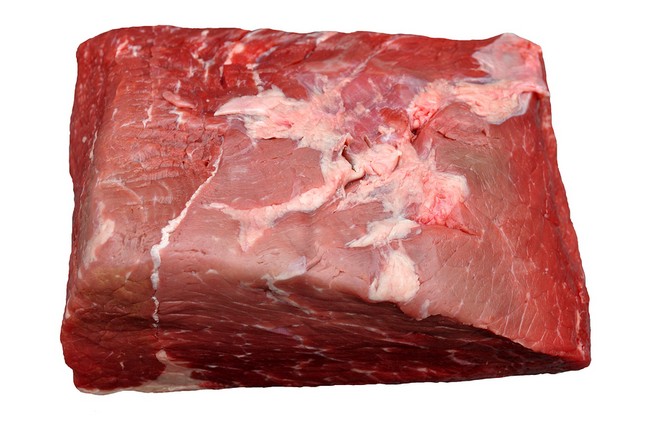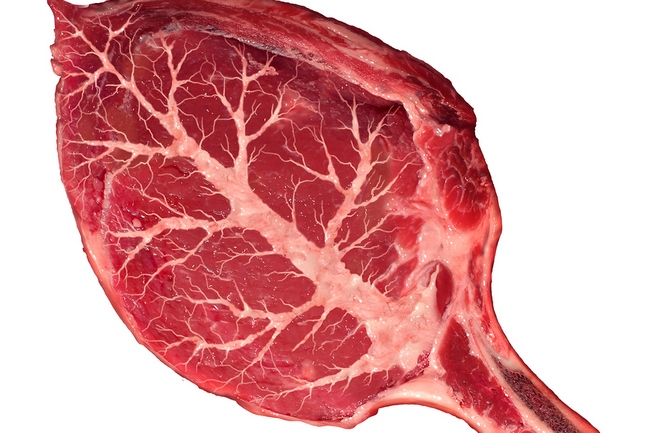- Make It Yourself Lavender Heart-Shaped Bath Bombs!
- 20 Things You Never Knew About “Down There”
- 12 Best Foods For Those Suffering From Arthritis Pain
- 12 Personal Hygiene Mistakes Almost Everyone Makes (Mom Never Told You About #4!)
- 15 Medicinal Plants And Herbs From The Cherokee People
- 12 Mind-Blowing Benefits Of Drinking Coconut Water During Pregnancy
- 12 Outstanding Winter Foods That Won’t Fatten You Up Like A Christmas Turkey
Filet Mignon, London Broil, and What the Heck is That?!

Photo credit: bigstock.com
Just when you think your traditional factory farmed meat can’t possibly get any worse, it does. If something sounds disgusting, gross, and unnatural, it’s probably worse than you imagine, and in this case, that’s true. What are we talking about? Meat glue. No, not glue made from meat by-products, but a type of glue that is used to stick smaller pieces of meat together in order to make a larger piece of meat, or to make interesting shapes, or to piece together things like sausages without using a casing. Does it sound gross? It is, and on top of this, it’s downright dangerous. If you thought pink slime was disgusting, then this might be considered the icing on the cake.
In order to understand how this works, we need to go back to before the cow is slaughtered. Many people are still in the dark when it comes to understanding the difference between factory farmed cattle and grass fed, free range, organic cows. Factory farmed cattle are fed the worst kind of diet imaginable and live in terribly overcrowded, filthy conditions. This forces farmers to feed their cows antibiotics, and tons of them, right up until the day they are killed, to try to fight off disease.
However, most slaughterhouses are not the cleanest of places either, as you can imagine. In fact, if you look at the USDA recall list each year, it’s always very, very long. Why is this? Because factory fed cows often come to the slaughterhouse already diseased, or if they aren’t diseased when they get there, the meat will become contaminated when it comes into contact with the other meat or when it gets dumped on the counters or floors.
The USDA has a very intricate and complicated way of keeping track of all the cows that come from each farm, so that if they do find some meat that is contaminated with, say, E.coli, they know where that animal came from and they can issue a recall for the meat from that animal, or all the animals that were killed from that farm on a particular day.
Continue to Page 2

Photo credit: bigstock.com
However, when meat pieces are glued together, there is almost no way to track this meat and find out where it came from. Food poisoning is a huge problem in America. The CDC estimates that somewhere between 6 million and 81 million American will contract some type of food borne illness every single year. Food poisoning kills about 9,000 people each year. Those are scary statistics.
Any butcher will tell you that it almost impossible to kill an animal for food and avoid all bacteria or not have it become contaminated by other types of pathogens. This is why meat should be always be thoroughly cooked, no matter how much someone might love that rare, juicy steak. Cooking thoroughly will kill all the bacteria. Should someone consume a rare steak, for example, that was glued together, and they become sick, it would be impossible to tell where that meat came from.
SEE ALSO: Want to Do More than Meatless Mondays? Go Vegan in 5 Easy Steps!
You would think that the FDA would require testing on at least some meats, especially for E.coli, but they don’t. In late 2008, the FDA issued a guideline suggesting that meat processors test their meat before grinding them, but it was nothing more than a suggestion and, as you can imagine, meat processors only criticized the FDA.
What exactly is meat glue? It’s an enzyme called transglutaminase. Some glues are made from the cultivation of certain types of bacteria, while others are made from the plasma of the blood from cows or pigs. This means that when the plasma coagulates, it holds the meat together. If you have ever had a bandage stick to the blood on a wound, then you understand how this meat glue works. Pretty disgusting when you think about it.
Although you might think you can tell the difference from looking at it, you can’t. Some companies have become so proficient at using this glue that even experienced butchers can’t tell the difference.
Continue to Page 3

Photo credit: bigstock.com
Although many people are aware that ground beef can come, literally, from hundreds of cows, most people are unaware that their nice juicy steak or those frozen fish sticks are made from several different animals and held together by meat glue. Unfortunately, this also means that smaller pieces of meat can be stuck together and sold as prime cuts of meat for considerably more. This would be especially true at restaurants where you don’t get to read the label. Meat glue is used for more than just beef, also. Common meats where this process is used are pork and ham, lamb (especially when you see lamb mixed with other ingredients, such as scallops), chicken, imitation meats such as crab, fish products, and many processed meats, such as sausage.
This is a fairly simple problem to avoid most of the time, however. Taking the following steps will help keep you safe:
- Eat only grass fed organic beef or other meats so you eliminate any possibility that your meat contains glue. This is also the best way to ensure that you are getting the healthiest, most nutrition-packed meat for your dollar.
- If you are eating out, for example, always order your meat well done. This way, if the meat is contaminated, you will kill off the bacteria by thoroughly cooking the meat.
- Read labels at the supermarket. If it says “formed,” contains TG, transglutaminase (the actual word for meat glue), then choose another package of meat.
- Be wary of any restaurant or grill that is selling quality steaks at cheap price. Chances are good that they are simply using cheap round steak, cutting it into pieces, gluing it together, and passing it off as a higher priced prime piece of meat.
Although the FDA lists transglutaminase as “generally recognized as safe,” they don’t have a very good track record. After all, the FDA also considers aspartame and GMO foods safe to eat, when the American public knows this isn’t true.
If you have been reluctant to pay for organic, grass fed, free range meats, think again. If you or one of your family members became sick from contaminated meat, (and let’s not forget that bacteria like E.coli can kill!) what would you be willing to pay to make them well again? Exactly how much is our health worth in dollars and cents?
References:
VIDEO:
































